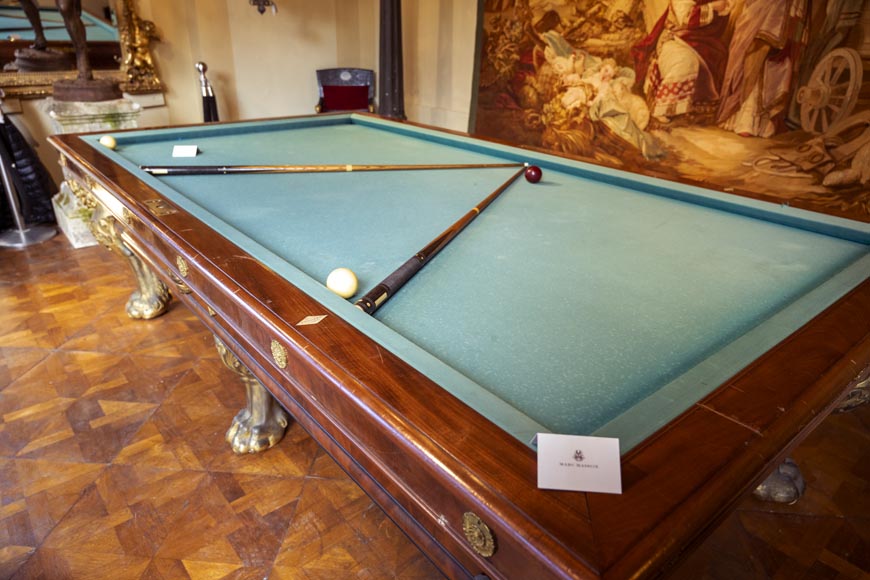Style Napoleon III / Ref.14023
Exceptional Charles X billiard by Maison Chéreau in mahogany and gilt bronze
Dimensions
Width 110'' ⅝ 281cm
Height 32'' ¼ 82cm
Depth: 61'' ⅜ 156cm
Origin:
19th century.
Status:
Good condition.
Billiards were first created in 1469 in France and have their origin in croquet, which was played outdoors at that time. A version of the game adapted to indoor play was then introduced, and then on a table. The billiard table underwent a slow evolution, propelled by the creativity of the French style which influenced the design of tables around the world, until it reached its apogee in the 1800s. According to "The Billiard Encyclopedia. An Illustrated History of the Sport", tables from this period became masterpieces of carving, inlay and marquetry, some of which, like our exceptional table, are of the highest quality.

The Maison Chéreau was founded in 1816 and settled in the heart of Paris, at 307 rue Saint Denis and 18 rue du faubourg du Temple. It specializes in the creation of exceptional billiard tables, especially with music, and was patented by the king for 5 years from 1828.
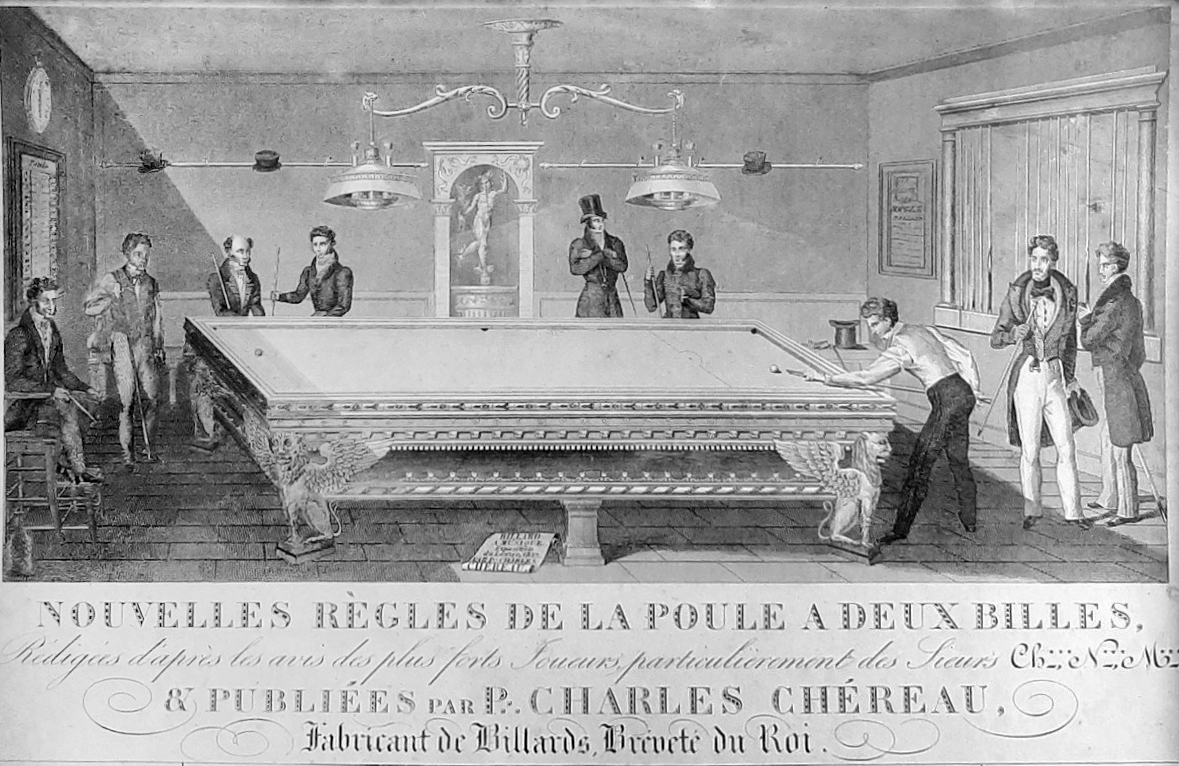
It acquired an unprecedented notoriety in 1816, by the creation of one of the most beautiful and original tables in the history of billiards. The Maison P. Charles Chéreau, manufacturer of billiards, designed a table equipped, under its bed, with an organ that played a different note depending on the pocket in which a ball landed. It was unique and was presented at the Louvre Exhibition in 1827. The specialty of the Chéreau firm was to supply particularly elaborate tables to high society and royalty, such as our six-legged solid bronze table. Typical of French billiards, also called carom billiards, or three-ball billiards, our billiard is played on a pocketless table (without holes), decorated with a green carpet, and is generally played by two players with three balls.


The drawing "Ladies and gentlemen playing billiards" of 1756, by Johan Esaias Nilson (1721-1788), shows that at this date, the pin (probably replaced by a ball) and the hoop disappeared and that the ladies still used a crosier while the men already used a cue. The "blouses" (holes), clearly visible on the drawing, will start to be removed from the tables around 1850 in order to be able to play the game with three balls.
In addition to the improvements of the tables, the "pockets" of these were removed in France around 1850, and then in other countries. This allowed for better series, to the great pleasure of the players. The consequence was the opening of several new cafés, as well as very large billard rooms, notably in Paris, Vienna, Amsterdam and New York. The French three-ball game on a pocketless table became one of the most popular billiard games in the world. Some billiard tables are sometimes inspired by the style of furniture of a particular period, such as the Louis XV style table with six legs and marquetry, similar to ours.
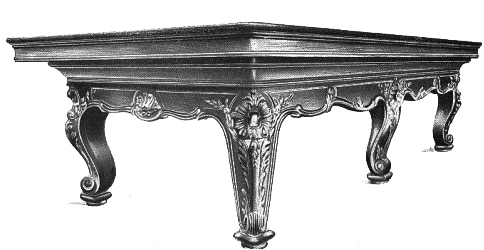

Our six-legged billiard table in solid bronze with lion's heads and mahogany veneer, was made by the Maison Chéreau, Blanchet & Co and then transformed by the award-winning craftsman E. Gueret (Gold Medal 1889). This exceptional piece was during decades in the magnificent Renaissance-style Château de la Cordelière. This impressive castle was built by the owner of Moët & Chandon in 1892, in Chaource (near Troyes), in a Louis XII, Gothic and Renaissance style. The second floor had vast and luminous rooms with high ceilings, and housed our large and exceptional billiard table, a pair of wrought iron sconces and iron lanterns and stained glass windows (currently presented around the billiard table in our stand 2 & 2 bis of the Paul Bert market).


The table is overall sober and elegant, characteristic of the Charles X. It is an exceptional piece from the 1820s. In the XIXᵉ century, Cuban mahogany was highly prized, which reinforces the grandeur of de billard. It is supported by six superb ormolu legs with small scrolls, featuring lion heads with clawed feet. The intensity of the bronze, accentuated by exceptional ciseling, highlights the dark color of the mahogany around the billiard table, notably by the inlay of a dozen rosettes. The lions' mouths on the legs are now blocked, which indicates that the original table was "à blouses" and was transformed thereafter "à la française" by E. Guéret, to reinforce the noble aspect of this game. This transformation is reversible, it is thus possible to return to the original model.



The mother-of-pearl cartouches indicating "Maison Chéreau, G. Blanchet & Cie, E. Guéret Sr." and "Médaille d'or, 13 [or 73] rue de Lancry, PARIS" were probably added during the transformation to the French style.
Indeed, it would seem that the Maison Chéreau, specialized in the manufacture and creation of exceptional billiard tables, collaborated with the great piano manufacturers. In the list of the rewarded of the National Exhibition of Paris in 1827 (same decade as our billiard table) the names "Roller and Blanchet" located at 10 boulevard Poissonnière in Paris, received a silver medal for "Pianos transpositeur, pianos droits, Chromamètre" and explains the mention of the name "Blanchet" at the side of "Maison Chéreau" on the cartouche.
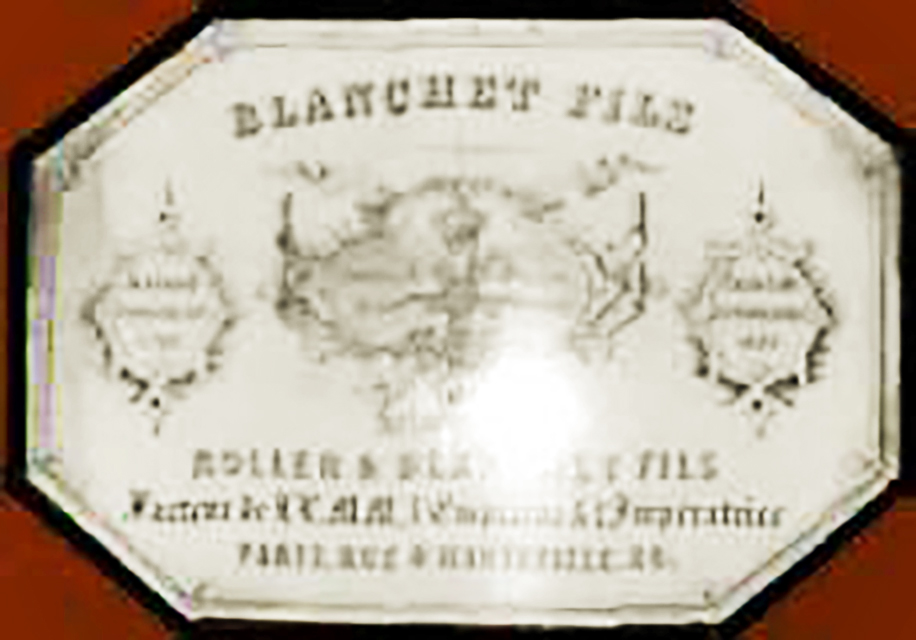
The same year, we also find in the list of the rewards, the name of "Gaidon" (who also worked with Blanchet) for an honorable mention for a piano, as well as the address 307 rue Saint-Denis in Paris, which is also the address of the Chéreau Company. The sharing of the Chéreau workshops with a piano factory has therefore surely nourished the creation of our billiard table.



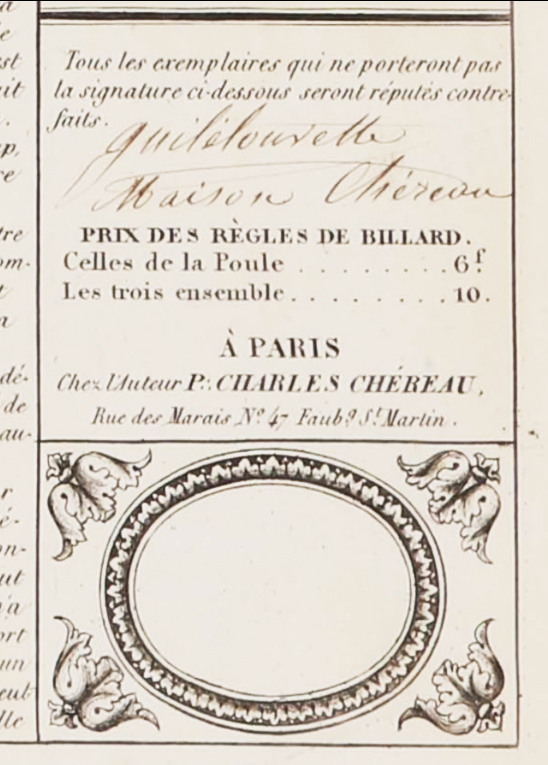
Informations
Price: on request
Recommended for you :
Dimensions:
Width: 120
Height: 197
Depth: 45
Dimensions:
Width: 128
Height: 218
Depth: 44
Dimensions:
Width: 84
Height: 186
Depth: 49
Dimensions:
Width: 390
Height: 125
Depth: 65
Dimensions:
Width: 258
Height: 85
Depth: 144
Dimensions:
Width: 159
Height: 251
Depth: 67
Dimensions:
Width: 103
Height: 88
Depth: 51
Dimensions:
Width: 77
Height: 194
Depth: 37
Dimensions:
Width: 79
Height: 157
Depth: 35
Dimensions:
Width: 132
Height: 74
Depth: 77
Dimensions:
Width: 83
Height: 179
Depth: 45
Dimensions:
Width: 100
Height: 173
Depth: 47





